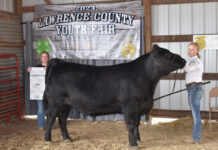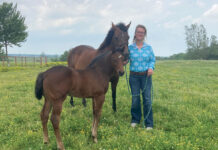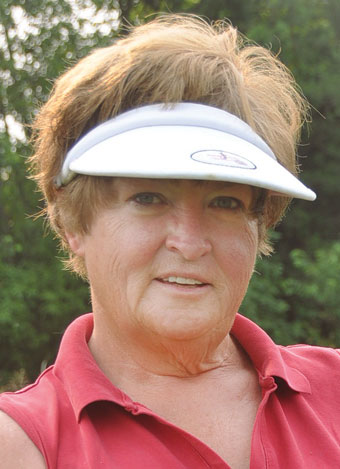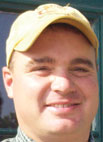
For some farmers there is nothing prettier than a herd of Herefords grazing in the pasture. Tom Luthy III is one of those farmers. Tom owns a 200-acre farm in Laclede County; LIII Farms. He said, “We farm a total of about 350 acres.” That includes his father’s farm.
Located between Long Lane and Lebanon, Mo., LIII Farms is home to 100 registered Herefords.
When asked about his breed of choice, Tom said, “The easy answer is that’s what I grew up with.”
But that’s not the only reason for his selection. He explained, “My motto is consistency, efficiency and ideal cattle. I think that describes Herefords very well.” He explained that efficient means, “they can convert grass and many different conditions across the country into meat. They’re very efficient at making meat.”
Tom and his wife, Siu, have a 3-year-old daughter, Clare. He said, “The docile nature of Herefords is a big thing. I like being able to have my daughter around the cattle.”
Tom added, “I also think we’ve been able to improve on the meat quality in the Hereford breed. That’s why we’ve focused on them alone. I like the way they taste, too.”
He has had Herefords, “all my life, which would be over 30 years, since my dad’s been in it. Personally, I’ve branched out on my own for 14 years.”
He really likes Herefords because, “they’re easy to raise.” He added, “It’s easier with Herefords, given their nature and their ability to live on many conditions.”
LIII Farms raises registered seedstock. Tom said, “The majority are sold through private treaty. We also participate in some production sales.”
They raise bulls. He said, “That’s our primary selling point.”
Tom observed, “We have had a tremendous amount of interest in our Hereford bulls because I think there are so many Angus cows. People want to make the black/white cross. So I’m seeing a lot more interest in the past few years; people that are not our normal customers – people that are more Angus types. I think there’s always going to be a back and forth there.”
Currently they have 30 bulls. They sell their bulls in the spring and in the fall. Tom stated, “Within the next two years we will have our first bull production sale.”
When looking at important characteristics of herd bulls, Tom said, “Number one is their carcass traits. I want them to pass on the carcass. I like to see a docile bull, because I believe those traits are also passed on. Then just being phenotypically correct.”
When it comes to the most valued traits in a Hereford cow Tom said, “I think the common answer is their docile nature. That’s a very known trait in a Hereford. I think one that’s really overlooked is their longevity. Hereford cattle can produce for many years.”
Tom commented, “If I would pass any information along to consumers it’s that we’re really striving to improve the carcass in the Hereford breed, not just in our herd but in the breed as a whole. We’re trying to create Hereford cattle that really produce quality beef.”
Tom stressed, “Our focus is for performance and genetics, and passing that on to our consumers.”
Embryo transfer is one way he is improving his herd. Tom said, “We utilize co-op herds, so we don’t have recipient cows ourselves. We implant our embryos into someone else’s recipient herd. Then we pay for a live, weaned calf. You’re buying your own cattle. That way they’re getting paid for the calf they aren’t having, or keeping, and also the rental fee.”
He focuses on two or three donor cows and only uses about a dozen recipients. “We’re trying to taper that down as we go along,” he stated.
Tom said, “We’ve raised the donor cows that we’re using and a lot of the EPDs (Expected Progeny Difference) that you have across the breeds have Dollar Indexes.” He explained, “They’re essentially taking EPDs, combining certain EPDs and that gives you a snapshot in these Dollar Indexes. A lot of producers are relying on those now just to have a quick snapshot of an animal and if they want to utilize those genetics.”
Tom stated, “We have two of the top three Hereford females in the Dollar Index performance this year, that we’ve raised.”
He advised anyone wanting to start a Hereford herd to, “start with good females, because you can more easily find great bulls. But it takes a long time to build high quality females.”







